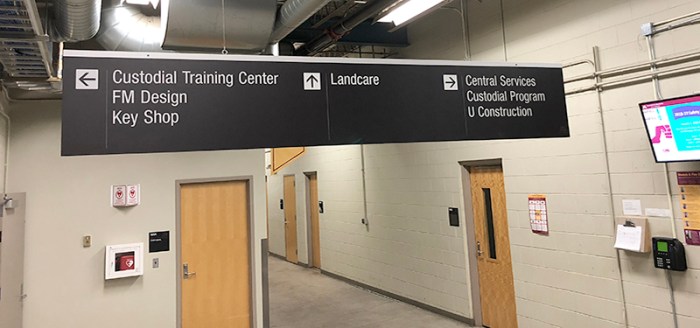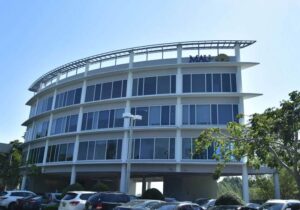Delve into the world of facilities management at the University of Minnesota, where cutting-edge strategies and sustainable practices converge to create a dynamic and efficient campus environment. Join us as we explore the innovative approaches, energy-saving initiatives, and technology-driven solutions that define facilities management at this esteemed institution.
Facility Management Practices at the University of Minnesota
The University of Minnesota prioritizes effective facility management to ensure a conducive learning and working environment for its students, faculty, and staff. The university employs a comprehensive approach that encompasses strategic planning, preventive maintenance, and innovative technologies to optimize facility performance.
One notable strategy implemented is the use of a computerized maintenance management system (CMMS). This system streamlines work orders, tracks maintenance history, and provides real-time data on facility conditions. By leveraging technology, the university can proactively identify and address potential issues before they escalate into major repairs.
Sustainable Practices
The University of Minnesota is committed to sustainability in all aspects of its operations, including facility management. The university has implemented several initiatives to reduce its environmental footprint, such as:
- Energy-efficient lighting and HVAC systems
- Water conservation measures
- Recycling and waste reduction programs
- Green building design and construction
Collaboration and Partnerships
The University of Minnesota recognizes the importance of collaboration in effective facility management. The university has established partnerships with external vendors and contractors to access specialized expertise and resources. These partnerships allow the university to leverage industry best practices and innovative technologies to enhance facility performance.
Energy Efficiency and Sustainability Initiatives
The University of Minnesota is committed to sustainability and energy efficiency as core principles guiding its facilities management operations. The university has implemented a comprehensive range of initiatives and programs to reduce energy consumption, promote environmental stewardship, and create a more sustainable campus environment.
Energy Efficiency Programs
The university has implemented several energy efficiency programs to reduce energy consumption in its facilities. These include:
– Energy Star Certification: The university has certified over 200 buildings as Energy Star compliant, demonstrating their superior energy performance and compliance with strict energy efficiency standards.
– Lighting Upgrades: The university has upgraded lighting systems in over 1,000 buildings to energy-efficient LED fixtures, resulting in significant energy savings and reduced maintenance costs.
– Building Automation Systems: The university has installed building automation systems in over 500 buildings to optimize energy usage, monitor building performance, and identify opportunities for further efficiency improvements.
– Renewable Energy Initiatives: The university has installed solar panels on several buildings and is exploring other renewable energy sources to reduce its reliance on fossil fuels.
Facilities Planning and Development

The University of Minnesota’s facilities planning and development process ensures that the university’s physical infrastructure meets the evolving needs of its students, faculty, and staff. The process involves long-term planning, assessment of facility needs, prioritization of projects, and allocation of resources to support the university’s academic and research mission.
The university’s long-term planning process involves the development of a comprehensive master plan that Artikels the university’s physical development goals and objectives for the next 10-15 years. The master plan is developed through a collaborative process that involves input from faculty, staff, students, and the surrounding community.
Assessment of Facility Needs
The university regularly assesses its facility needs to ensure that its buildings and infrastructure are meeting the evolving needs of its academic and research programs. The assessment process involves the collection of data on space utilization, condition of facilities, and projected enrollment growth. The data is used to identify areas where there is a need for new or renovated facilities.
Prioritization of Projects
Once the university’s facility needs have been assessed, the projects are prioritized based on their impact on the university’s academic and research mission, the condition of the facilities, and the availability of funding. The prioritization process is conducted by a committee of faculty, staff, and administrators.
Allocation of Resources
The university allocates resources to facility planning and development projects based on the priorities established by the prioritization committee. The resources are used to fund the design, construction, and renovation of facilities.
Space Utilization and Optimization

The University of Minnesota prioritizes optimizing space utilization in its facilities to enhance efficiency, reduce operational costs, and foster a productive work environment. This approach involves a comprehensive evaluation of space needs, strategic resource allocation, and continuous improvement initiatives.
To effectively evaluate space needs, the university employs data-driven methods. Space utilization studies, conducted regularly, analyze occupancy patterns, space utilization rates, and user feedback to identify areas for improvement. This data informs decisions regarding space allocation, renovations, and new construction projects.
Resource Allocation and Efficiency
Once space needs are determined, the university allocates resources strategically to maximize efficiency. Space planning teams work closely with academic and administrative units to optimize space utilization, considering factors such as space type, equipment requirements, and collaborative workstyles. The university also implements space management software to facilitate efficient space assignment, tracking, and optimization.
Continuous Improvement Initiatives
The University of Minnesota recognizes that space optimization is an ongoing process. Continuous improvement initiatives are implemented to enhance space utilization and efficiency over time. These initiatives include:
- Space audits to identify underutilized or inefficiently used spaces.
- Collaboration with faculty and staff to explore alternative space utilization models, such as shared workspaces and flexible work arrangements.
- Adoption of innovative technologies, such as sensors and data analytics, to monitor space utilization and identify opportunities for optimization.
Technology Integration and Innovation

The University of Minnesota embraces technology to enhance facilities management operations, streamlining communication, automating processes, and boosting operational efficiency.
Communication Enhancement
The university utilizes a centralized communication platform that integrates email, instant messaging, and video conferencing. This platform enables seamless communication among facilities management staff, contractors, and occupants, ensuring prompt response to requests and emergencies.
Process Automation
Automated work order systems streamline the process of submitting, tracking, and completing work orders. These systems integrate with the university’s asset management database, providing real-time access to asset information and maintenance history.
Operational Efficiency
The university leverages building management systems (BMS) to monitor and control building systems such as HVAC, lighting, and security. These systems optimize energy consumption, reduce maintenance costs, and enhance occupant comfort. Additionally, the university utilizes data analytics to identify areas for improvement and make data-driven decisions.
FAQ Resource
What is the University of Minnesota’s approach to space utilization?
The university employs a data-driven approach to space utilization, using analytics to assess space needs and identify opportunities for optimization. This involves regular space audits, space planning software, and collaboration with academic and administrative units to ensure efficient allocation of resources.
How does the university integrate technology into its facilities management operations?
The University of Minnesota leverages a range of technologies to enhance facilities management, including building automation systems, mobile work order management, and predictive maintenance software. These tools streamline communication, automate processes, and provide real-time data to optimize maintenance and operations.




